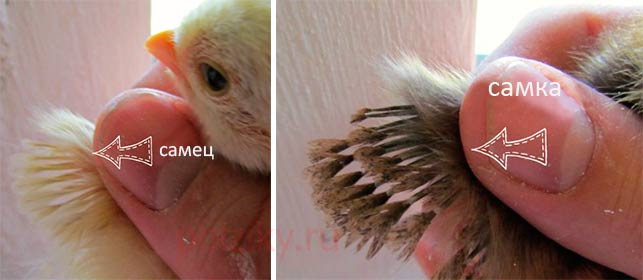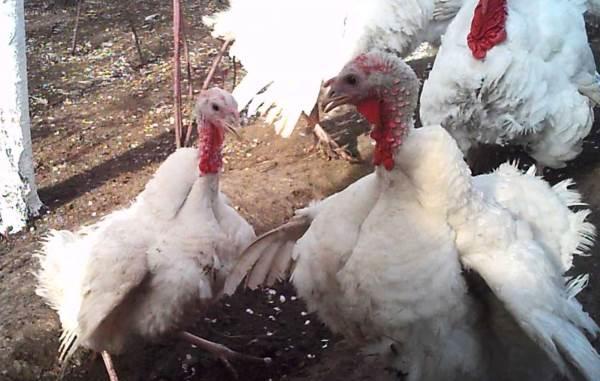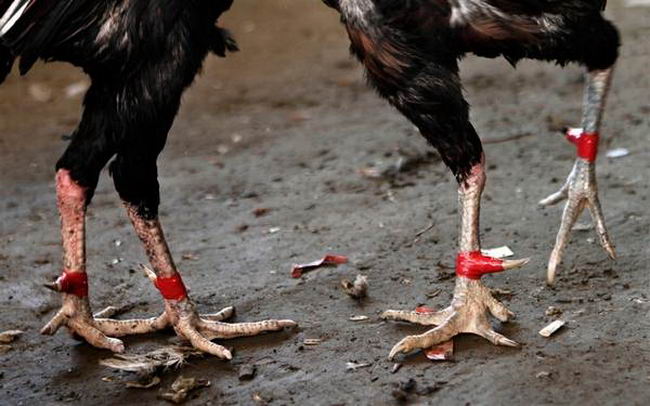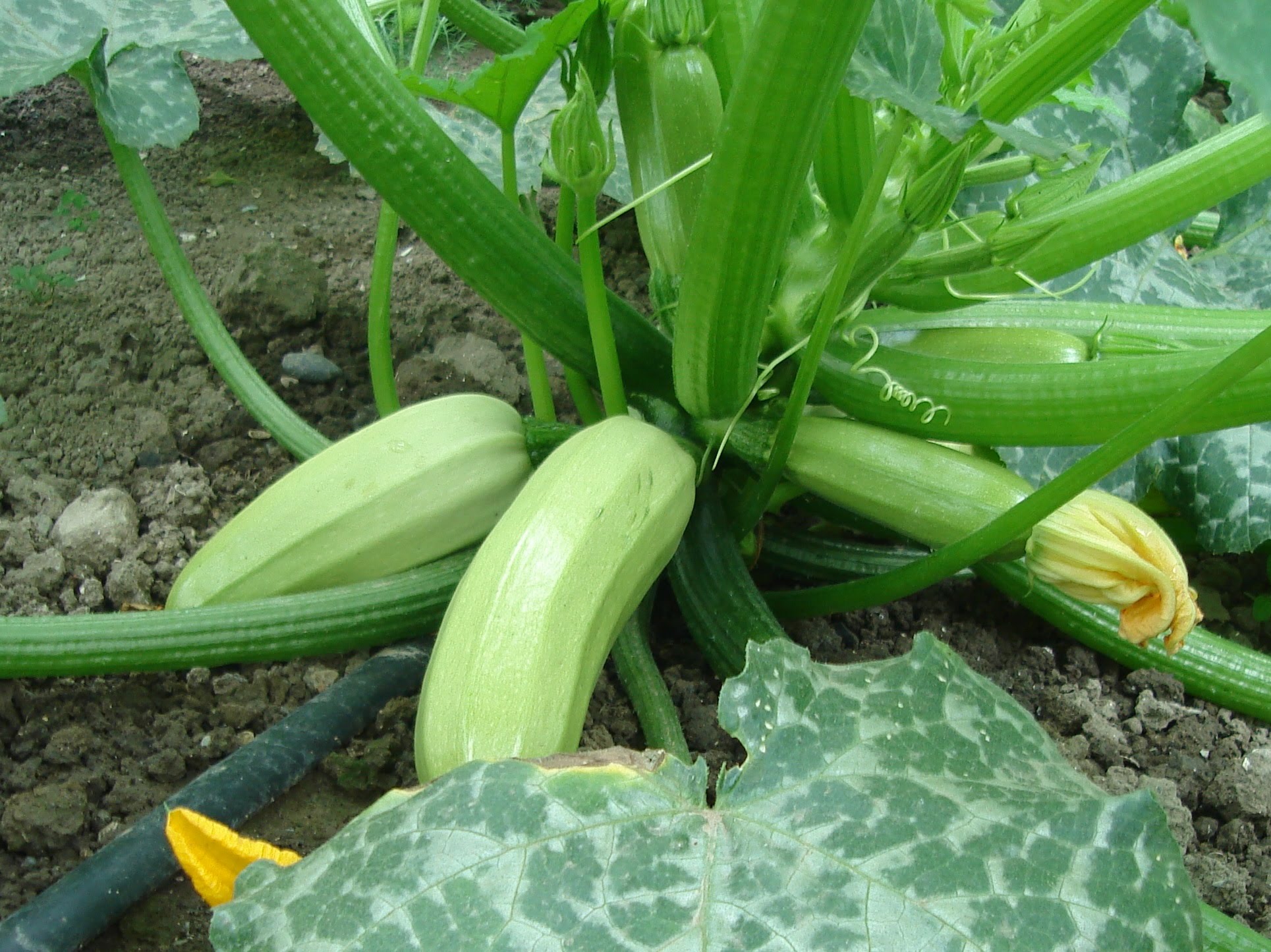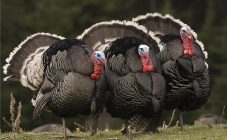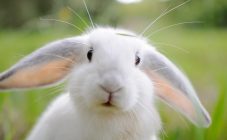Content:
- How to determine the sex of chicks
- Differences for determining the sex of a turkey
- Along the length of the feathers on the wings
- Features of behavior
- Differences during puberty
- By behavior before mating
- Behavior in the flock
- Differences in crest and "earring" above the beak
- By voice
- Plumage difference
- By the feathers on the tail
- Differences in a special iron
- Differences in the presence of spurs on the legs
- Differences in litter count
- Additional methods
Many farmers who start breeding domestic birds are interested in how to distinguish a turkey from a turkey. This is a very important question, since sex marks directly affect the characteristics of the bird's keeping.
Farmers have developed several methods for specifying gender. The only drawback they all have is that none of them is capable of giving a 100% result. It is possible to distinguish the sex of a domestic turkey only experimentally, in adulthood.
How to determine the sex of chicks
At the initial stage of chick breeding, the farmer should know how to determine the exact sex of newborn turkey chicks immediately after hatching. The easiest and most accurate way to find out the sex of turkeys in the first days of life is by their genitals. For this purpose, the chick's cloaca is carefully stretched, the farmer looks through the genitals of the feathered. In a day-old turkey, they are red paired, in a female, they are different and are two folds connected in the middle. This method gives absolutely accurate results, with experience and skill, it allows you to distinguish a boy and a girl in the turkey family.
Determining the sex of day-old turkeys
Also, poultry farmers use the proven folk method of specifying the sex by feathering the wings. When the wing of the chick opens, its framing looks: if the edge is even, then the male, if the uneven, the female.
External differences will help to distinguish a male from a turkey at the age of 1-2 days. Males are larger in size, males have a powerful naked neck, large corals in the form of cones stand out on it. The turkey has plumage on its neck, the size of the corals is smaller. This method is most relevant when the chicks are one week old. When do turkey poults start to grow corals? Fully corals on a powerful neck and large head are formed in chicks at the age of 2-3 months. During this period, the chicks begin to weaken, require increased care and attention.
Sex determination at weekly, monthly age
At the age of one week, only the Japanese method of gender determination is suitable, by genitals, when the farmer examines everyone. It gives the most accurate results.
What do monthly turkeys look like? A yellow-bellied chick at this age weighs no more than 1,300 g.
Outwardly, the male differs slightly from the female, therefore, the farmer looks at the acquired monthly turkey poults for sex determination by the length of the feathers on the wings, by the cloaca.
Differences for determining the sex of a turkey
Before sex determination, the farmer must decide on the method. There are several signs on how to determine the gender of turkeys:
- Overall length and the presence of a characteristic mark on the plumage;
- Nuances of behavior;
- The structure of the scallop, the presence of a pronounced beard and developed spurs;
- Total weight of an adult.
In the first month, males have small beards, their feathers are stiffer, the beak is larger and larger than that of young turkeys. The weight of the male is greater than the female. Tail feathers in boys grow and develop at a rapid pace. You can also clarify the sex by the rate of growth and development of an individual: boys increase their total mass faster, turkeys grow and develop a little more slowly.
Along the length of the feathers on the wings
By the length of the feathers on the wings, the sexual characteristics of the chick are determined. Moreover, you can start using the method from a week of age of birds. In boys, the length of feathers in the wing is the same, in turkeys, it is different. As it grows, it levels out, so it is important to use this method only in the first days of turkey poultry life.
Features of behavior
Another way to differentiate poults by sex is to notice behavioral signs. Boys are committed to protecting their offspring at all times. If the birds are going to protect the brood of chicks, then these are males. Young turkeys often quarrel among themselves, express their superiority in the fight for the female by arranging fights.
Differences during puberty
During puberty and hunting, young males express themselves very aggressively. Poultry farmers try to stop fights at the very initial stage, isolating the cocky turkey from the rest of the individuals. Strangers suffer from such aggressive birds.
Sexual maturity of turkeys occurs in 190-220 days. Permanent laying of eggs lasts 3 months. The ability for active mating is manifested in turkeys at the age of 9 months. There are times when hardy female turkeys become pregnant without the participation of males, that is, artificially. This way of fertilization turns out to be effective when males are sick, turn out to be weak, with incompatibility of breeds.
By behavior before mating
Before the sexual hunt, the behavior of a turkey-boy and a turkey changes, at this time it is easy to distinguish one from the other. The turkey starts flirting with the opposite sex. She performs attractive dances that signal her readiness to mate. Many experienced farmers claim with confidence that turkeys carefully choose their partner, they are not indifferent to who will be the father of their offspring. They choose the only one, only then proceed to courting dances.
Behavior in the flock
Differences in crest and "earring" above the beak
The boy turkey has a catchy burgundy comb, the turkey has a pale pink or orange tone. Turkeys of both sexes have outgrowths above the beak. In feathered boys, a pronounced process on the beak is larger than in a turkey. In a turkey, the growth is barely noticeable.
By voice
Turkeys have a pronounced bubbling voice, turkeys do not have this feature. There is a popular method of specifying the gender: to whistle loudly, if an answer comes, then a turkey.
Plumage difference
Males stand out with a bald, scarlet head. Females have fluff; the volume of the head is much less in boys than in males. The exposed neck of males is longer.
By the feathers on the tail
The tail of delicate females looks inconspicuous, in males it is catchy. In the tail of male turkey poults, feathers are even, neat.
Differences in a special iron
In 5-month-old boys, a special gland is palpable, outwardly similar to a wart. The hidden gland is quite dense; when feeling the females, nothing superfluous is found. This method is great for farmers, at this age, turkeys begin to be removed from turkeys.
Differences in the presence of spurs on the legs
Sharp spurs on developed legs are a characteristic of boys. Girls are beardless, their strong spurs stand out only in exceptional cases.
Differences in litter count
Additional methods
Summing up, I would like to focus on the main points related to determining the sex of birds:
- Total weight and dimensions;
- The presence of beards and corals;
- Small, dense wart;
- The bubbling sounds of boy chicks;
- Head size and sexual manifestations;
- Lush tail of males;
- Differences in bowel movements;
- Behavioral nuances.
These points should be known to every poultry breeder containing birds.

